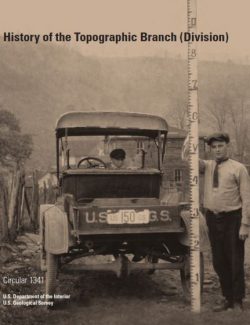Description
This book is the result of many hours of research and personal recollections of Richard T. Evans and Helen M. Frye and was compiled and organized during the mid-1950s. Included are a number of documents that were considered worthy of preservation, as well as several diary excerpts from the early days.
From a very early period of the world’s existence, man has endeavored to represent the earth’s surface in a graphic form for the information of his fellow men, realizing that no oral or written description is capable of setting forth topographic facts so vividly and so clearly as a map. Mapping of the areas of the United States began with the charting of portions of its coast line by early explorers, the need for topographic maps was first recognized during the war of the Colonies for independence from Great Britain.
On July 22, 1777, Congress authorized General Washington to appoint: ‘Mr. Robert Erskine, or any other person that he may think proper, geographer and surveyor of the roads, to take sketches of the country and the seat of war.’ By several acts during the Revolutionary War, Congress provided ‘geographers’ for the armies of the United States, some of them with the pay of a colonel, amounting to $60 a month and allowances.
At the end of the War, a resolution of May 27, 1785, continued in service the ‘geographer of the United States’ for a period of 3 years. The War Department recognized the necessity of ‘geographical engineers’ and requested Congress to authorize their appointment, but it was not until the next war that Congress authorized on March 3, 1813, the appointment of eight topographic engineers and eight assistant topographic engineers under the direction of the General Staff of the Army. These officers formed the nucleus of the first Corps of Topographic Engineers in the Army, and that Corps continued to function as an independent unit until it was absorbed by the Corps of Engineers in 1863, during the Civil War between the States.


Leave us a comment
No Comments